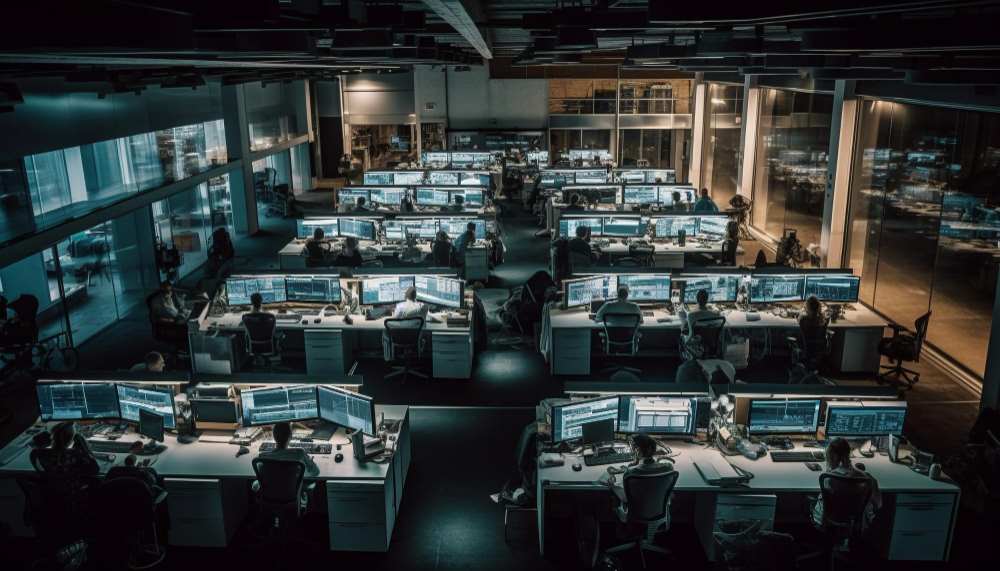Globally and across industries, the risk landscape is growing more volatile and complex, with risks becoming increasingly interconnected and unpredictable. Increasing cyber-attacks, geopolitical tensions, AI governance, and regulatory shifts have made operational resilience a key priority.
A recent report titled The India Cyber Threat Report by the Data Security Council of India, which studied over 18 industries, has specifically raised serious concerns about the increasing vulnerability of the finance and healthcare sectors to cyberattacks. At this time, a robust and adaptable risk management framework is imperative for organizations in these sectors.
The three lines of defense (3LOD) model is a cornerstone of strong operational risk management strategies. This framework establishes clear roles and responsibilities for managing risk across an organization’s three distinct yet interlinked functions.
Among these, the first line of defense stands out as the mainstay of the 3LOD framework, representing the point where risks emerge and require immediate action. This article examines how organizations can strengthen this critical function by integrating people, processes, and technology.
Understanding First Line of Defense
The first line of defense, a.k.a frontline, is often called the “eyes and ears” of the business. At the forefront of an organization’s risk posture, these teams are the first to encounter risks and are uniquely positioned to identify and address them as they arise. Beyond detection, they hold important insights into the risks.
However, the effectiveness of the first line is contingent upon its ability to identify, assess, and mitigate risks efficiently. Organizations must ensure that their frontline teams are adequately empowered with the tools, training, and support they need to fulfil their critical role in safeguarding the enterprise.
The Human Factor in Risk Mitigation
Employees are critical in identifying, managing, and escalating real-time risks. Their ability to detect emerging threats early can significantly strengthen the organization’s overall risk posture. A nurse at a hospital, a teller at the bank, or a customer services executive at a telecom retail outlet are all examples of frontline workers who hold critical intelligence as they go about their daily operations.
Their job roles involve engaging with external stakeholders, customers, and partners. Being the first to hold these interactions, they hold the unique position of being valuable sources of risk-related information for the company.
For example, a single suspicious transaction report (STR) filed by a frontline bank executive can actively stop the flow of illegal money and the associated financial crime. Training and awareness programs are essential for them to leverage this potential fully. These initiatives empower employees to recognize risks, follow clear escalation protocols, and take decisive action when needed.
Beyond training, creating a risk-conscious culture is also key. While technology and processes support risk management, human intuition and judgment remain irreplaceable. Employees bring context and adaptability to complex scenarios, enabling real-time responses. By empowering them through training, awareness, and a supportive culture, organizations can transform their workforce into vigilant risk managers, fortifying their first line of defense.
Leveraging Technology to Strengthen the First Line of Defense
The first line of defense isn’t just about having the right people in the frontlines. It is also about equipping them with the right tools and technology.
Modern technology platforms can bridge gaps and break down silos while bringing a smooth data flow and better collaboration across the lines of defense. Risk leaders understand this, with 57% considering investing in new technology for their risk teams as among their top three priorities. With the right technology, the first line becomes more efficient, proactive, and empowered to manage risks effectively.
Among such robust tech tools are AI-powered observation management solutions that streamline the risk management process. For example, observation management software enables business users to easily capture and report anomalies and risks, providing a simple, intuitive interface to track potential threats. This capability is further enhanced through various functionalities such as widgets, chatbots, browser plugins, and web forms, making it easy for employees to flag risks and deviations in real time.
By automating the triaging and classification of observations, AI and machine learning (ML) help improve efficiency. With AI-powered intelligent triage, risks can be classified as incidents, issues, or loss events and automatically routed for review, approval or resolution (as the case be). This leads to a 60% reduction in the time to create and review issue impacts and a 40% reduction in cycle time to close issues.
AI-driven real-time issue tracking in the observation management software also ensures that risks are quickly identified and prioritized for remediation. The technology can intelligently correlate similar problems and findings and then recommend actionable plans based on their business criticality. This structured remediation process helps organizations address risks more effectively by identifying and mitigating high-priority issues before they escalate.
Another software highlight is its graphical dashboards and flexible reports that give organizations real-time visibility into critical observations and issues and help them respond faster to emerging risks. These visual tools allow teams to drill into detailed data, identifying key risks and tracking their resolution.
With such advanced visibility, businesses can ensure that risks are managed efficiently across the organization.
Continuous Employee Training And Enablement Programs
While investing in technology is important, ongoing employee enablement is a crucial step in ensuring the first line of defense remains effective.
This needs to be achieved through targeted training programs that equip employees with the skills to identify and address emerging risks. Scenario-based learning enhances this by immersing employees in realistic risk situations, helping them respond proactively in real-time. Regular assessments ensure employees stay updated on risk management best practices and can reinforce their knowledge to act confidently when facing potential threats.
By continuously developing frontline capabilities, organizations can strengthen their risk resilience and create a culture of vigilance and accountability.




